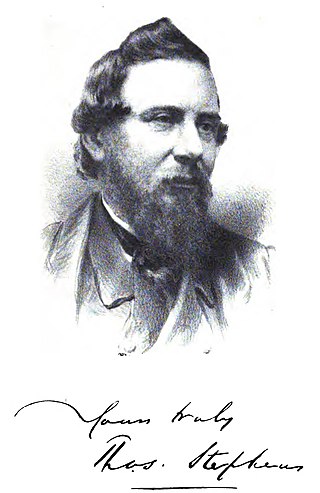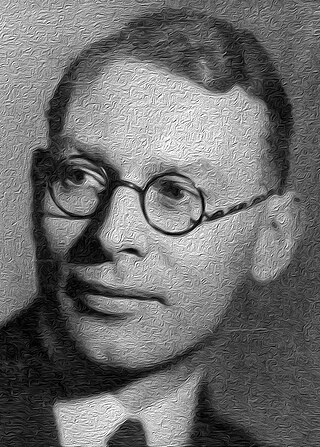Related Research Articles

Woodworking is the skill of making items from wood, and includes cabinetry, furniture making, wood carving, joinery, carpentry, and woodturning.

Furniture refers to objects intended to support various human activities such as seating, eating (tables), storing items, working, and sleeping. Furniture is also used to hold objects at a convenient height for work, or to store things. Furniture can be a product of design and can be considered a form of decorative art. In addition to furniture's functional role, it can serve a symbolic or religious purpose. It can be made from a vast multitude of materials, including metal, plastic, and wood. Furniture can be made using a variety of woodworking joints which often reflects the local culture.

Plywood is a composite material manufactured from thin layers, or "plies", of wood veneer that are glued together with adjacent layers, having both glued with each other at right angle or at 90 degrees angle. It is an engineered wood from the family of manufactured boards, which include medium-density fibreboard (MDF), oriented strand board (OSB), and particle board.

In Welsh culture, an eisteddfod is an institution and festival with several ranked competitions, including in poetry and music. The term eisteddfod, which is formed from the Welsh morphemes: eistedd, meaning 'sit', and fod, meaning 'be', means, according to Hywel Teifi Edwards, "sitting-together." Edwards further defines the earliest form of the eisteddfod as a competitive meeting between bards and minstrels, in which the winner was chosen by a noble or royal patron.

Brynmawr is a market town, community and electoral ward in Blaenau Gwent, Wales. The town, sometimes cited as the highest town in Wales, is situated at 1,250 to 1,500 feet above sea level at the head of the South Wales Valleys. It grew with the development of the coal mining and iron industries in the early 19th century. Until the reorganisation of local authorities in 1974, Brynmawr was administered as part of the county of Brecknockshire.

Archdruid is the title used by the presiding official of the Gorsedd. The Archdruid presides over the most important ceremonies at the National Eisteddfod of Wales including the Crowning of the Bard, the award of the Prose Medal and the Chairing of the Bard. Although Iolo Morganwg was the first to preside over the Gorsedd when the National Eisteddfod came into being, his successor David Griffith, under the bardic name "Clwydfardd", was the first to be known by the official title "Archdruid".

The National Eisteddfod of Wales is the largest of several eisteddfodau that are held annually, mostly in Wales. Its eight days of competitions and performances are considered the largest music and poetry festival in Europe. Competitors typically number 6,000 or more, and overall attendance generally exceeds 100,000 visitors, the highest recently being 118,000 attending the 2022 festival. The 2018 Eisteddfod was held in Cardiff Bay with a fence-free 'Maes'. In 2020, the event was held virtually under the name AmGen; events were held over a one-week period.
This article is about the particular significance of the year 2006 to Wales and its people.
The Brynmawr Experiment was an effort led by the visionary idealist Peter Scott to address issues of poverty and unemployment in Brynmawr, South Wales between 1929 and 1939. Initially a relief project response of the Quakers in South-East England, it grew first into an effort to set up small industries and finally an ambitious utopian subsistence agriculture project for unemployed workers.

Thomas Stephens was a Welsh historian, literary critic, and social reformer. His works include The Literature of the Kymry (1849,1876), Madoc: An Essay on the Discovery of America by Madoc ap Owen Gwynedd in the Twelfth Century (1858,1893), and Orgraff yr Iaith Gymraeg (1859), as well as a number of prize-winning essays presented at eisteddfodau between 1840 and 1858. He was the first Welsh historian and literary critic to employ rigorous scientific methods, and is considered to have done more to raise the standards of the National Eisteddfod than any other Welshman of his time. Stephens also figured prominently in efforts to implement social, educational and sanitary reforms both locally in Merthyr Tydfil and more broadly throughout Wales.
This article is about the particular significance of the year 1938 to Wales and its people.

The Brynmawr rubber factory is a now-demolished building which was situated in Brynmawr in Blaenau Gwent, Wales. It was designed and constructed between 1946 and 1952 by the Architects' Co-Partnership, a group of architecture alumni from the Architectural Association in London, in collaboration with engineer Ove Arup. Featuring a nine-domed concrete ceiling, the building was part of the "Festival of Britain period" in architecture and became the first post-war building to receive listed status, with a Grade-II* designation in 1986. Despite this status, the building was demolished in 2001 leaving only the boiler house intact, and the site is now occupied by housing and a superstore.

Danish modern is a style of minimalist furniture and housewares from Denmark associated with the Danish design movement. In the 1920s, Kaare Klint embraced the principles of Bauhaus modernism in furniture design, creating clean, pure lines based on an understanding of classical furniture craftsmanship coupled with careful research into materials, proportions, and the requirements of the human body.
Matthew Burt is a British furniture designer-maker who runs a contemporary practice from a studio and workshop based in the South Wiltshire village of Sherrington, west of Salisbury. His work has been displayed in significant public exhibitions, most notably in the OneTree touring show and at the House of Commons in 2008 in a selection of work intended to raise the profile of UK furniture making. Burt's workshop steadily built on a reputation for furniture design that allies structurally robust work that fulfils its function with a lean, elegant line and the occasional bravura surface. Burt has said that he regards the 'intermingling of science, engineering, mathematics, aesthetics and metaphorics' as the building blocks for his furniture.

Grete Juel Jalk (1920–2006) was a Danish furniture designer. From the 1960s, she did much to enhance Denmark's reputation for modern furniture design with her clear, comfortable lines. She also edited the Danish magazine Mobilia and compiled a four-volume work on Danish furniture.

A cabinet is a case or cupboard with shelves and/or drawers for storing or displaying items. Some cabinets are stand alone while others are built in to a wall or are attached to it like a medicine cabinet. Cabinets are typically made of wood, coated steel, or synthetic materials. Commercial grade cabinets usually have a melamine-particleboard substrate and are covered in a high-pressure decorative laminate, commonly referred to as Wilsonart or Formica.

Molded plywood is the term for two- or three-dimensionally shaped products from multiple veneer layers that are glued together through heat and pressure in a pressing tool. The veneer layers are arranged crosswise at an angle of 90 degrees. Molded wood is used for flat furniture components such as seats, backrests and seat shells. When the veneer layers are arranged in the same direction, it is called laminated wood. It is used for armrests and chair frames. After pressing, the blanks are processed mechanically. A particular feature is the ability to produce different variations of shapes from the blanks. Due to its immense strength and low weight, molded wood is particularly suitable for interior decoration, seating furniture, bed slats, skateboards and vehicle construction.

Gerald Summers (1899–1967) was an American mid-century modern furniture designer. He came to prominence with his design for the Bent Plywood Armchair. Another of his noted works was the Two-Tier Table. Both pieces were designed in 1934 and manufactured by Makers of Simple Furniture, the firm he founded.

The 2018 Cardiff National Eisteddfod was held in Cardiff Bay, Wales, from 3 to 11 August 2018. It was the seventh time the National Eisteddfod of Wales had been held in Cardiff. The 2018 event was billed as the Eisteddfod with "No fences" because it dispensed with the traditional enclosed 'Maes', or entrance fees to the event location. It made a £290,000 loss, but its popularity led to the suggestion of future Eisteddfods without fences.
List of winners of the Welsh Learner of the Year, a competition held every year at the National Eisteddfod of Wales.
References
- 1 2 3 4 5 6 7 8 9 10 Smith, Roger (1987). "Paul Matt and the Brynmawr Experiment". Furniture History. 23: 88–97.
- 1 2 UK Retail Price Index inflation figures are based on data from Clark, Gregory (2017). "The Annual RPI and Average Earnings for Britain, 1209 to Present (New Series)". MeasuringWorth. Retrieved June 11, 2022.
- 1 2 3 4 5 6 "The Brynmawr Experiment, 1929-40". Amgueddfa Cymru – Museum Wales . 23 April 2007.
- 1 2 3 "Royal National Eisteddfod of Wales, 1938". Reports and Transactions of the Cardiff Naturalists' Society. LXXI: 24. 1938.